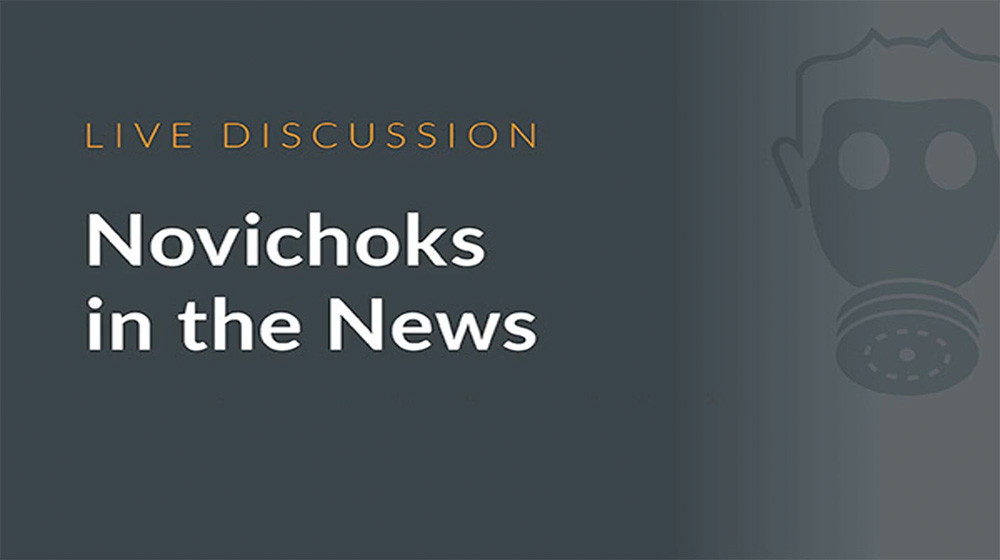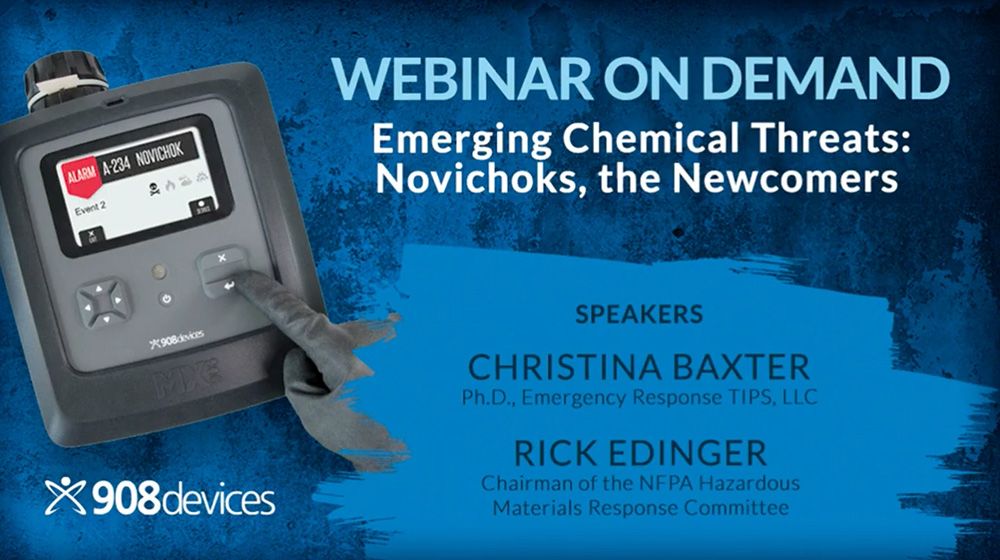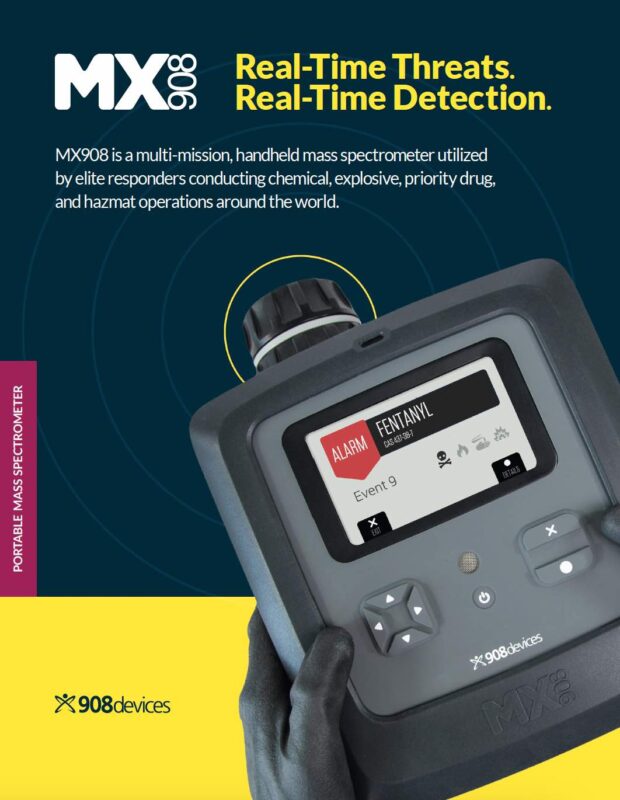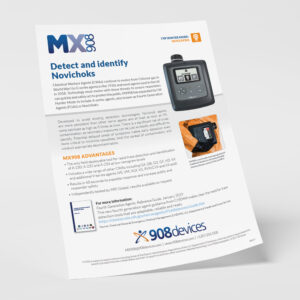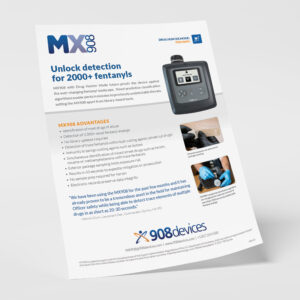Chemical Detection
Novichoks and PBAs
Emerging classes of chemical warfare agents call for new tactics and modern technology.
Defining the Threats
Fourth Generation Agents (A-Series)
Known uses in 1995, 2015, 2018, and 2020
A-Series agents, potent acetylcholinesterase inhibitors with signs and symptoms similar to traditional G- and V-Series nerve agents, were designed with specific knowledge of existing NATO detection and protective equipment, and ultimately, the goal of countering those detection and protection methods.
They tend to be oily liquids which produce little to no vapors. They pose significant cross-contamination and exposure risks due to a combination of high potency and environmental persistence, and consequently a small release can rapidly become a large-area hazard.
Due to their increased potency they often require higher antidote doses and can create additional vapor hazards when improperly decontaminated.
Pharmaceutical Based Agents (PBAs)
Known use in 2002
Synthetic opioids such as fentanyl pose a similar risk to nerve agents with their potency and potential lethality. These are often referred to as pharmaceutical based agents (PBAs).
While not unique to Russia, these agents were first deliberately weaponized during the Moscow theater crisis where approximately 170 people died from respiratory arrest after a PBA mixture was disseminated in aerosol form.
Synthetic opioids are readily available through global illicit supply chains and are also synthesized by state actors. There are hundreds to thousands of potential PBA options, none of which are detected by traditional CBRNE detection technology during an aerosol dispersal event.
Review the Resources
Working together with experts in the CBRN field, we’ve put together reference material on these emerging CWAs:
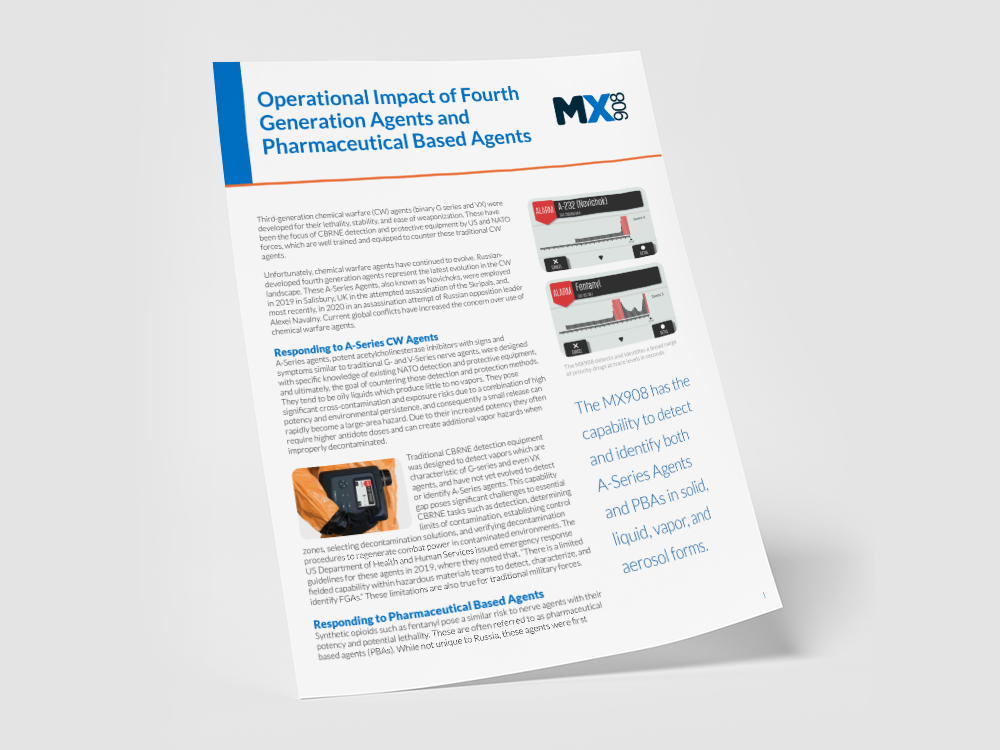
Flyer
The Operational Impacts of Novichoks and Pharmaceutical Based Agents
Download this two-page review of the operational impacts of Novichoks and pharmaceutical-based agents.
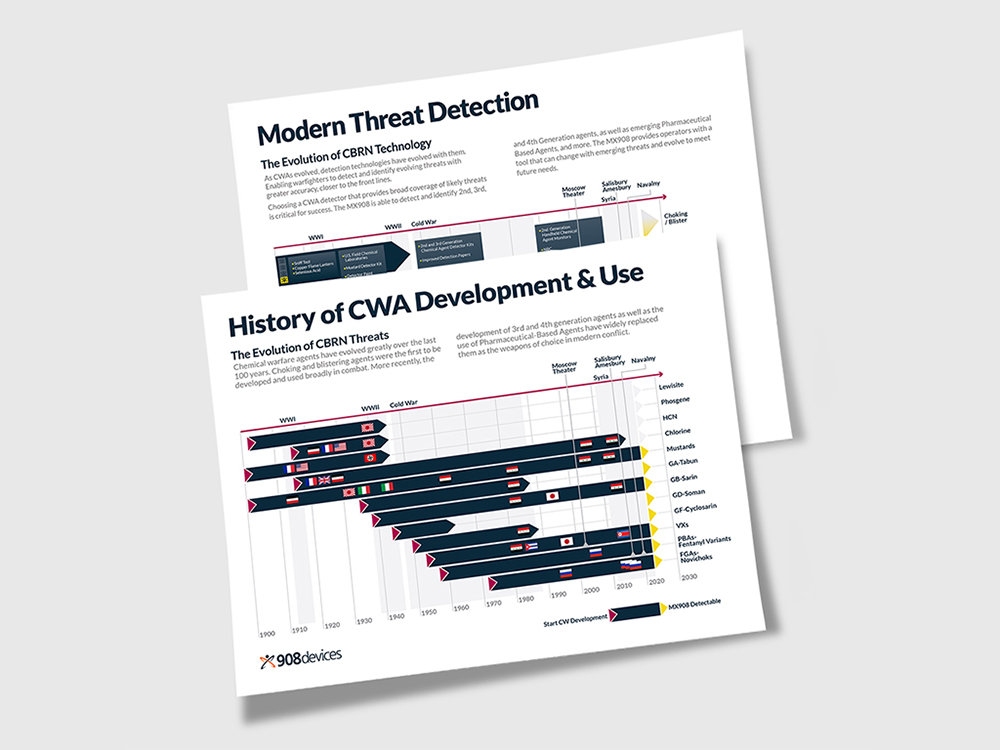
Flyer
CBRN History Overview
Download this detailed overview of the last 100 years of chemical warfare development and use. Chemical warfare agents have evolved greatly over the last 100 years.
Webinar
Novichoks in the News
Watch this review on the history of how Novichok chemical warfare agents were developed.
Topics include:
- The unique challenges Novichoks present to the responder
- Known events where Novichoks were used
- Response recommendations
- Detection and Identification solutions
Webinar
Novichoks,
the Newcomers
Watch this detailed review of the Russian Novichok attack in Salisbury, England and its impacts on today’s first responders and military personnel.
Topics include:
- Details on the “Salisbury Incident” on March 4, 2018 where a Novichok was used, and the response that followed
- Gain insights into the response in England that can guide future encounters
- Explore how the MX908 can support responders who may be facing a Novichok in the field
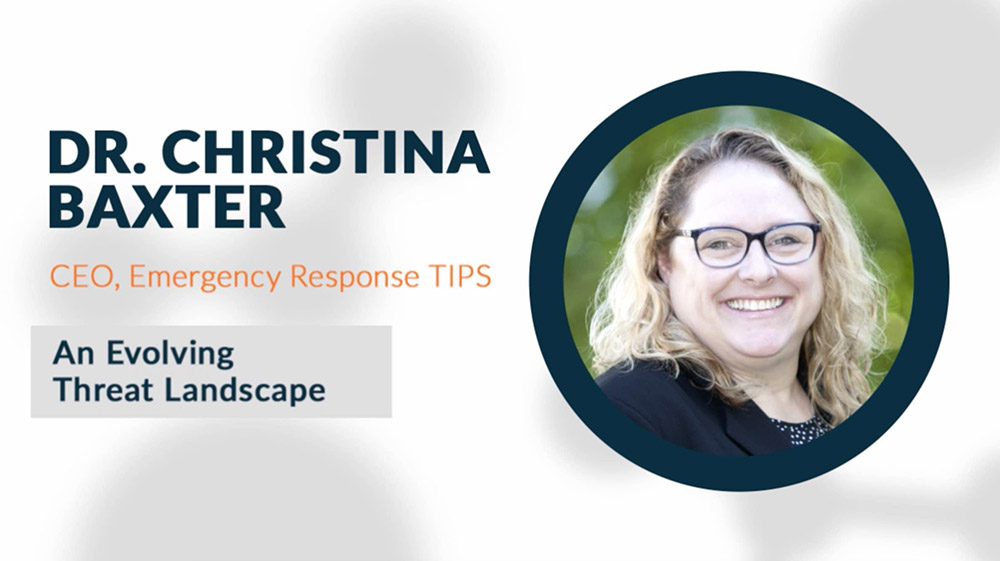
Webinar
When Two Worlds Collide – The Nexus Between Drugs and Terrorism
Join Dr. Christina Baxter for a review of the current threat spectrum, with deep focus on pharmaceutical-based agents and aerosolized threats.
Rapid FGA and PBA Detection at the Point of Need
The MX908 significantly reduces advantages of A-series nerve agents and PBAs by providing rapid, trace-level identification in any phase. Switching from analyzing trace residue on a doorknob or other surfaces to aerosol and vapor analysis can be accomplished with a single device in seconds. Analysis of threat material is performed just as rapidly.
Get in Touch
Let us know how our team and the MX908 can support your mission.
email Subscribe to Our Communications Signup to receive new product updates, technical tips and more.
